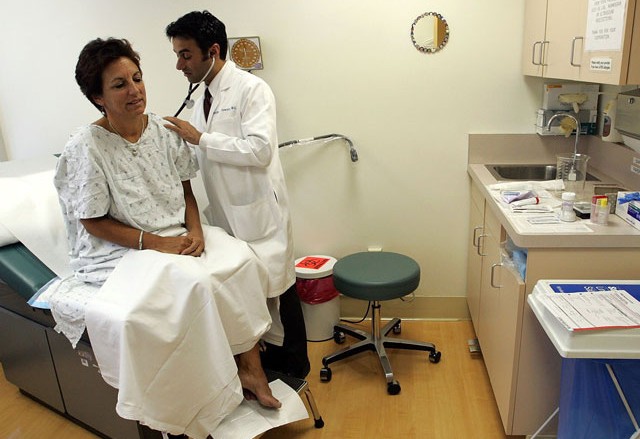HPV in Older Women May Be Due to Reactivation of Virus, Not New Infection – Infectious Diseases Society of America
A paper published in The Journal of Adolescent Health in April, 2008 said that HPV infection may decrease with age and varies based on geographic regions.(1) Yet despite this, the National Cervical Cancer Coalition reports that , “At least one study of middle-class, middle-aged women, most of them married with children, found that 21% were infected with cervical HPV.” (2)
In addition, the CDC states in another study entitled “Cervical Human Papillomavirus Screening among Older Women” and published in November 2005, that a “…high rate of HPV acquisition in 51-year-old women may be due to the reemergence of latent HPV infections caused by hormonal changes resulting from menopause or alterations to the cervix caused by hormone replacement therapy.” (3)
Researchers wrote in one study that “taken together, our data raise the possibility that reactivation risk may increase around age 50 years and contribute to a larger fraction of HPV detection at older ages, compared with new acquisition.” (4)
It is important to note that, as noted by Darron R. Brown, MD, and Bree A. Weaver, MD “previous studies demonstrating that HPV ‘clears’ after two years have been based on only one or two negative screenings. Several studies have shown that type-specific HPV can be detected again after a long period of non-detection, although whether this is due to reactivation of a low-level persistent infection or a new infection has not been established.” (5)
The bottom line to these findings?
Older women are showing up with HPV cervical infections. They need a safe and effective treatment. This is especially the case when one considers that “there are no drugs approved against the HPV. Current treatments include procedures, such as cryotherapy, conization, and the Loop Electrosurgical Excision Procedure (LEEP). These procedures use liquid nitrogen, a surgical knife (scalpel), a carbon dioxide (CO2) laser, or electrical current to remove the abnormal growths caused by the HPV. These growths include cells that harbor the active virus (this is before the HPV has caused cancer). The procedures do not target cells with the latent virus. Since they do not remove the latent virus, these procedures only produce a temporary remission.” (6)
References:
(1) Jennifer S. Smith, Ph.D., M.P.H.correspondenceemail, Amy Melendy, D.V.M., M.P.H., Rashida K. Rana, M.S., Jeanne M. Pimenta, Ph.D., B.Sc. “Age-Specific Prevalence of Infection with Human Papillomavirus in Females: A Global Review” Journal of Adolescent Health – Published July 3, 2008
(2) National Cervical Cancer Coalition – Myths and Facts
(3) CDC.gov – Emerging Infectious Diseases – Matthew J. Grainge*, Rashmi Seth*, Li Guo*, Keith R. Neal*, Carol Coupland*, Paul Vryenhoef†, Jane Johnson†, and David Jenkins* “Cervical Human Papillomavirus Screening among Older Women.” Published November 2011
(4) The Journal of Infectious Diseases – “HPV in Older Women May Be Due to Reactivation of Virus, Not New Infection” – Published 12/13/2012.
(5) Polansky H, Itzkovitz E. Gene-Eden-VIR Is Antiviral: Results of a Post Marketing Clinical Study. Pharmacology & Pharmacy, 2013, 4, 1-8



